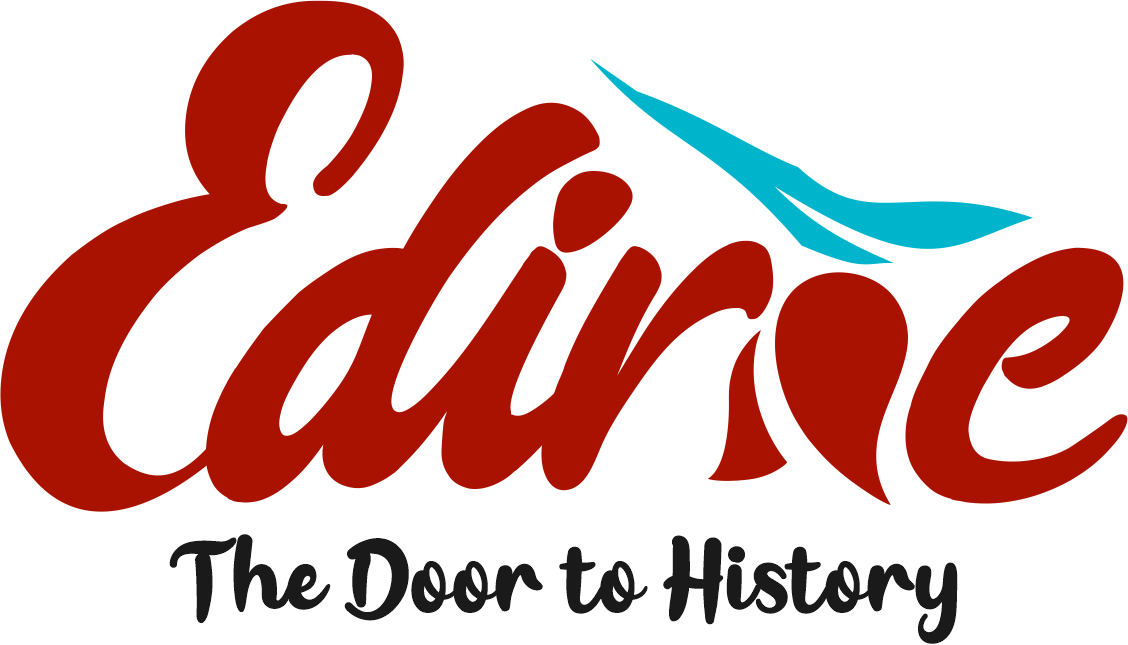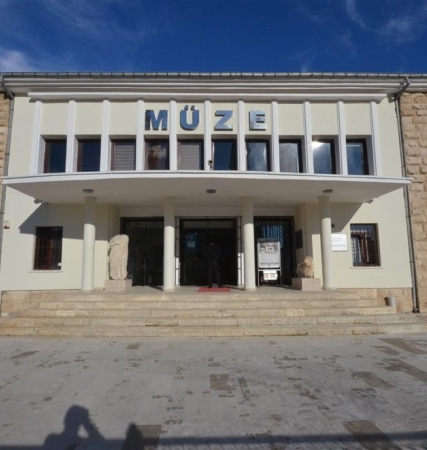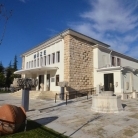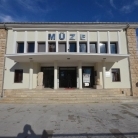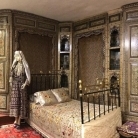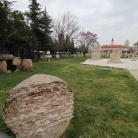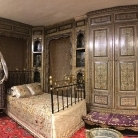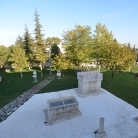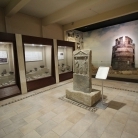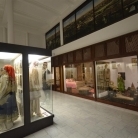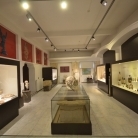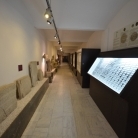Edirne Museum
The two museums established in Edirne in 1925 and 1936 were merged into a single directorate in 1954 and Muzaffer Batur was appointed as the director. Although some short introductory articles were written after both museums were gathered under the roof of a single directorate, a period of stagnation was experienced until 1966. From this year onwards, with the increase in the number of artefacts, the construction of a new building was included in the programme. It was decided to construct the new museum building in the area behind Selimiye Mosque in line with the standard plan prepared by Y. Architect İhsan Kıyığı, which was applied in many provinces of Anatolia. The construction process was completed in the early seventies after pauses. During this period, the building used as the Ethnography Museum was also renovated and its exhibitions were reorganised. In 1971, the museum in question was opened under the name of the Museum of Turkish-Islamic Works, which we have seen examples in the cities of Istanbul and Bursa, which were the capitals of the Ottoman Empire, such as Edirne, and the building whose construction was completed behind Selimiye Mosque was opened to visitors under the name of Edirne Archaeological and Ethnographic Museum.
In the archaeology section of the museum, which houses archaeological and ethnographic artefacts; sarcophagi, dolmens and menhirs from the Roman period are exhibited in the garden and tombstones from the Ottoman period are exhibited just behind it. In the garden, there are also column capitals and sculptures from the Hellenistic, Roman and Eastern Roman periods and the fish ponds of Edirne, which are related to the water culture of the Ottoman period.
The archaeological finds begin with stone, bone and terracotta finds from the Middle Neolithic - Early Chalcolithic Period (7300 - 7400 years before present) found in Enez Hocaçeşme Mound. The artifacts found in the Hacılar Dolmeni excavation, the Lalapaşa Arpalık Dolmeni and the ceremonial vessels found in the rescue excavations of Taşlıcabayır Tumulus, which are exhibited in the garden of the museum, are exhibited as documents of the culture of the Late Bronze - Early Iron Age in 1400-800 BC. Among the marble sculptures and steles; tomb steles depicting the deified Thracian Horseman belonging to the Thracians, the indigenous people of the region, are among the regional artifacts exhibited in the museum.
The excavations and researches carried out since 1971-72 in Enez, an important port city established on the obligatory transit route where the land, sea and river routes connecting the Balkans, Anatolia and the Aegean in the early ages intersect, show the development of the region from the Neolithic Age to the present day. Among the finds of the Enez excavations, which constitute an important part of the museum, figured amphoras, terracotta figurines and ceramic artifacts, marble sculpture fragments, steles, various jewelry and other valuable artifacts are exhibited.
Apart from the artifacts of the region seized from Kapıkule, İpsala and other border gates, various artifacts belonging to Anatolian civilizations are also exhibited in the museum. In addition to jewelry, terracotta and glass artifacts, sculptures, steles and coins are exhibited in showcases belonging to their periods.
Edirne, which served as the capital of the Ottoman Empire for nearly a century, is known as one of the important cities in the XVIIth century and the reflections of this unique culture are seen in the display of ethnographic artifacts. The carpets, embroidery, and Edirnekari burdens in the bridal room are valuable artifacts of the period with high artistic value. The tombak ibriks, incense burners, and gülabdans exhibited in the hall attract attention. Local costumes specific to the Balkans shed light on the ethnographic identity of the city. In the hall where calligraphy is represented with different examples, some special items used by the Great Leader Atatürk during his visit to Edirne are also exhibited. The exhibition starts with the carpet-rug gallery at the entrance. In the large hall, there are Edirnekâri load-bearer, Edirne bridal room, hammam corner, Edirne living room, Şarköy rugs, Edirne houses linen plaster sample, various embroidery and clothes, jewelry, embroidery, and works gifted by individuals. A wooden chest decorated with ship depictions, edicts, calligraphy plates and original examples of the Edirnekâri decoration technique are among the works exhibited in this section.
The museum serves under the Ministry of Culture and Tourism.
Address : Meydan Neighborhood, Kadirpaşa Mektep Street, No: 7.
Telephone : (0284) 225 11 20
E-Mail : edirnemuzesi@ktb.gov.tr
Visiting Days : Open to Visitors 7 days a week.
Visiting Hours : Summer (April 1 - September 30) 09.00-19.00
Winter (October 1 - March 31) 09.00-17.30
Fee : Paid (under 18 and over 65 free of charge

